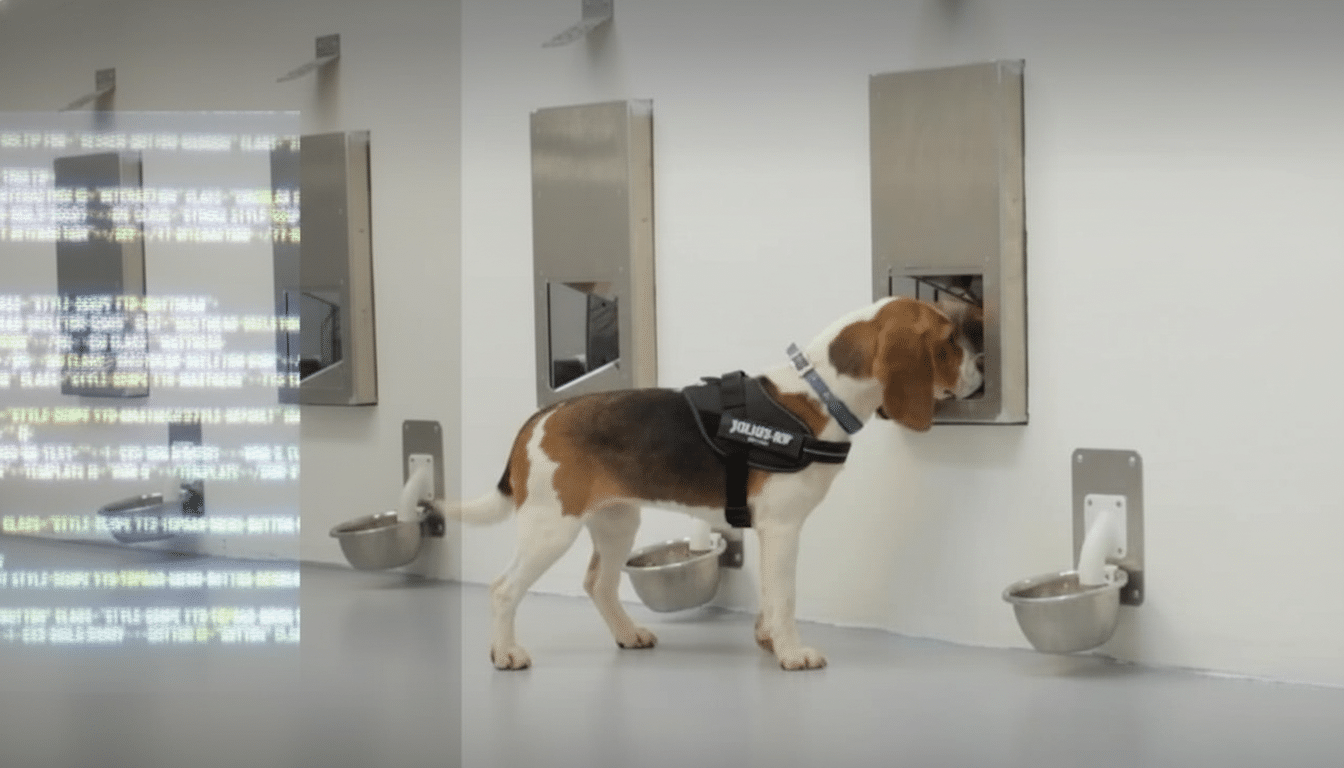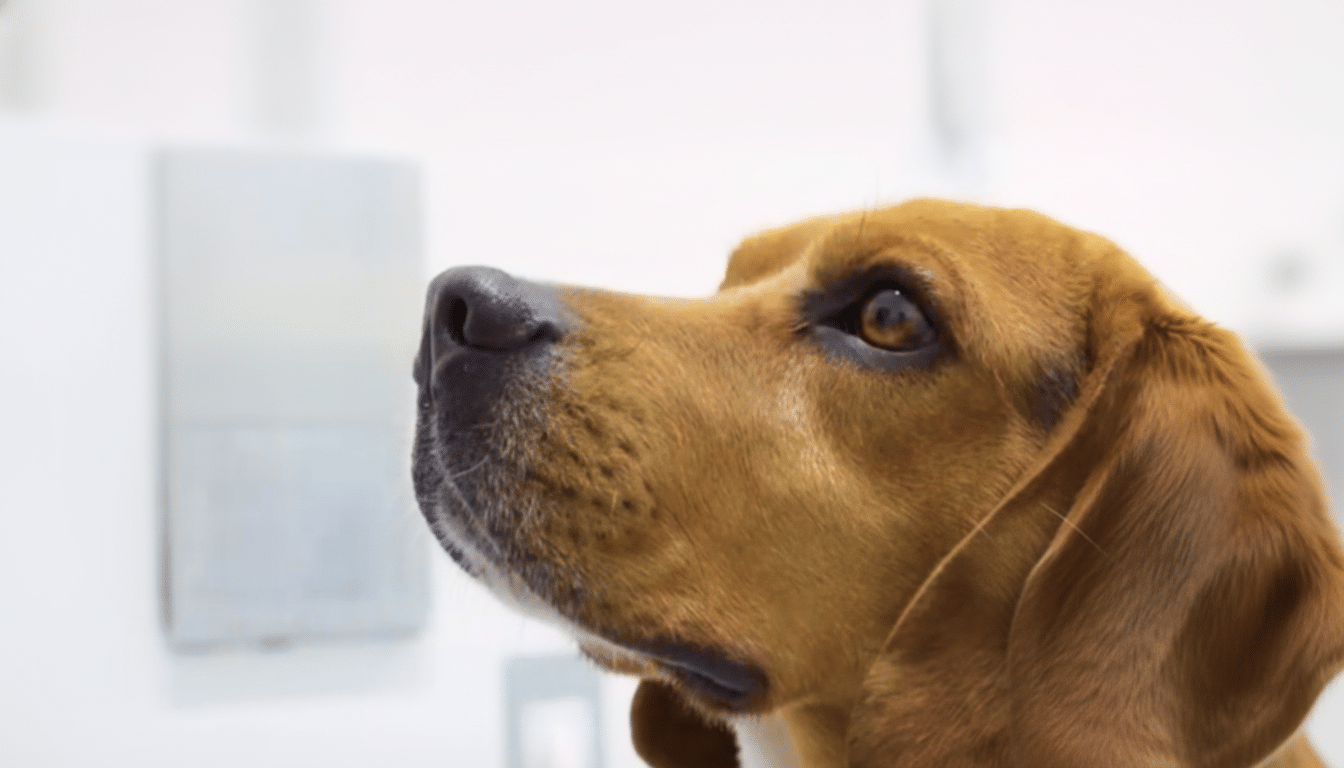SpotitEarly claims to have taught beagles and algorithms to do what oncologists have pursued for decades: flag common cancers early, in a way that is noninvasive and at scale.
Now the Startup Battlefield company wants to show off its breath-based screening system at the upcoming Disrupt conference, betting that a strange mixture of canine noses and machine learning will push multi-cancer detection from lab curiosity to public queue.

How the Canine-AI System Functions for Early Detection
The service starts at home. Users exhale into a collection device and send the sealed sample to SpotitEarly’s lab, where specially trained beagles analyze the scent profile. What’s feared, though, is not the dogs themselves but what they sniff out: There are up to 300 million olfactory receptors in a dog’s nose; by comparison, humans have about six million. Dogs can discern over 30 volatile organic compounds related to disease at parts-per-trillion levels, orders of magnitude lower than most instruments.
But it’s not just the dogs that are sensors in the loop. Overhead cameras, microphones and heart-rate monitors record the behavior and physiology of each working dog. The AI models of SpotitEarly learn the norm of the entire pack and provide a score for every read, attenuating handler bias and enhancing intra-test reliability. The concept is to combine instinctive biological detection with machine verification so that results are replicable while the service scales.
What the Early Data Reveals About Breath Screening
In the double-blind study, which was published in Scientific Reports, the company reported 94% accuracy when detecting early cancers from breath samples in a cohort of roughly 1,400 subjects. The work centered on four of the most common cancers — breast, colorectal, prostate and lung — for which early detection can be lifesaving. For decades, the National Cancer Institute has demonstrated that we have a dramatically higher five‑year survival if we catch these malignancies at an early and localized stage compared to later stages.
The headline number here is accuracy; however, the true test would be sensitivity and specificity by cancer type in larger independent cohorts. False positives could lead to unneeded follow-up, while false negatives might provide dangerous reassurance. The company says that future trials will increase the sample size and that they will start with a single-cancer test, in this case breast cancer, before adding a multi-cancer panel.
Positioning In A Crowded Screening Landscape
MCED continues to be an evolving category. All MCEDs are predicated on laboratory-developed tests operating under CLIA guidelines and none have received full FDA approval. The best-known option is Grail’s Galleri blood test, which generally costs about $950 out of pocket. Full‑body MRI services from companies such as Prenuvo and Ezra can easily cost more than $2,000, and incidental findings that need to be managed come up with relative frequency.
SpotitEarly will squeeze below those price points. The company is aiming for around $250 for a single cancer screen, with each additional cancer priced at a fraction of the first. It will be distributed through a physician network so that results can be presented within the context of other guideline-recommended screenings—mammography, colonoscopy, PSA testing and low-dose CT—rather than as replacements.

Why Dogs and Why Now for Multi-Cancer Detection
Clinicians and researchers have been studying dogs that smell disease for years — from studies using urine to detect bladder cancer in humans to others where dogs identified people infected with malaria. What we’ve lacked is a method for benchmarking performance and translating the lessons of dogs into a reproducible workflow. SpotitEarly’s model treats dogs as high-sensitivity biosensors, with AI serving as a quality layer, picking up micro-signals – such as breathing cadence or posture alterations – that might go unnoticed by humans.
There’s a strategic upside: labeled breath samples and coordinated behavioral telemetry could be used to train future “electronic nose” systems. If algorithms can learn the VOC signatures eliciting consistent canine responses, parts of the pipeline might someday be automated, adding throughput without sacrificing sensitivity.
Clinical and Regulatory Roadmap for SpotitEarly
SpotitEarly was founded in 2020 in Israel, and said it has launched in the U.S. with $20.3 million from investors including Hanaco VC, Menomadin VC, Jeff Swartz and Avishai Abrahami. The capital will be used for larger clinical studies, starting with a single breast cancer test and building up to the four-cancer panel as data mature.
As with any screening tool, the details of integration with care pathways will matter as much as raw performance. Positive screens will require confirmatory diagnostics and clear follow-up instructions, and any MCED will need to demonstrate that it is catching cancers earlier without bogging down health systems in unnecessary procedures. Regulators are also tightening oversight of laboratory-developed tests, so sound validation and transparent reporting will be important.
What to Watch at Disrupt: Workflow and Key Questions
Look for the company to show off its end-to-end workflow: at-home collection, lab processing, canine evaluation and AI confirmation.
- Scalability — how many samples per day can a pack of 18 beagles handle, and how does the company build more capacity?
- Reproducibility: can the animals’ performance hold across sites, breeds and changing environmental variables?
- Clinical utility — does the test reduce late-stage incidence and downstream costs when applied in addition to standard screening?
If a program like SpotitEarly can keep costs down, accuracy high in larger trials and fit smoothly into existing care, dogs and data could provide MCED with a viable new direction. And in cancer, detecting the disease months sooner is typically the difference that matters most.

